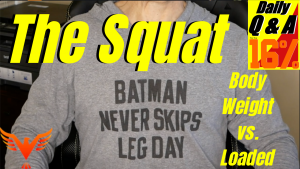My @neurocoffee is on another level today, so here’s today’s Q & A. From SanD: Can you please use your pelvis model to explain/compare pelvic position for stages of a reg squat v. competition back squat? Stuck trying to understand how the reg squat inhale down (sacrum counternutates, ilia spread, pelvic floor/guts drop) to yield, […]
exercises for shoulder pain
Q & A for The 16% – Understanding Upper Dorsal-Rostral Expansion – Exercise Strategy
I brought my @neurocoffee into the purple room so I could use a couple models to show you some key elements associate with the upper dorsal-rostral thorax. I spent some time this morning on a mentorship call discussing approaches to recapture the expansion in the area of the last few upper ribs and lower cervical […]
Q & A for The 16% – Shoulder Impingement – Why and How?
I have my @neurocoffee as usual but today’s Q&A felt like it would work better with a little help from Alfred in The Purple Room. From David: I get a lot of left shoulder pain with bench pressing. Any pressing really. I’ve followed the typical recommendations of doing ITYW exercise, face pulls, and rotator cuff […]
Q & A for The 16% – Single Leg Stance – Pelvis Mechanics
I have my @neurocoffee in hand and here’s today’s Q&A. From Mikheal: If someone is standing on one leg (left) and another leg is flexed in hip and knee 90/90 then the standing leg’s hip is excessively externaly rotated abducted and extended. Why is it and what to do with it? This one is all […]
Q & A for The 16% – The Squat – Body Weight Squats vs. Loaded Squats
My @neurocoffee is in high gear for this morning’s Q & A. From Mihail: Could you please explain how do the mechanics change between a body weight squat and a weighted squat? Wow… what a great question. Lots to unpack here. Be sure to ask questions! #backsquat #bodyweightsquat #billhartmanpt Find Bill: Instagram Facebook Twitter LinkedIn




